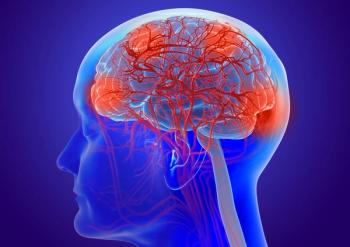
Electric Fields Therapy Improved Survival for Glioblastoma
The addition of tumor-treating fields to maintenance temozolomide chemotherapy significantly delayed progression and improved overall survival in patients with glioblastoma who had received standard radiochemotherapy compared with maintenance temozolomide alone.
The addition of tumor-treating fields to maintenance temozolomide chemotherapy significantly delayed progression and improved overall survival in patients with glioblastoma who had received standard radiochemotherapy compared with maintenance temozolomide alone, according to final results of a trial
Tumor-treating fields use low-intensity, alternating electric fields delivered via transducer arrays applied to the scalp. Patients treated with combined tumor-treating fields and temozolomide had a 37% improvement in progression-free and overall survival.
“These findings are in contrast to the more than 23 randomized trials conducted over the last decade that have evaluated novel agents or intensified treatment strategies (eg, dose-dense temozolomide, cilengitide, nimotuzumab, bevacizumab, and rindopepimut) for treatment of patients with newly diagnosed glioblastoma and have failed to demonstrate improved survival,” wrote Roger Stupp, MD, of the Northwestern University Feinberg School of Medicine in Chicago, and colleagues. “Innovative treatments for glioblastoma are needed.”
The randomized study was an open-label trial of 695 patients with resected or biopsied glioblastoma who had completed concomitant radiochemotherapy. Patients were randomly assigned 2:1 to tumor-treating fields plus maintenance chemotherapy or chemotherapy alone. Median age of patients was 56 years.
The median progression-free survival of patients assigned to tumor-treating fields was 6.7 months compared with 4 months for temozolomide alone (hazard ratio [HR], 0.63; 95% CI, 0.52–0.76; P < .001). Median overall survival improved by almost 5 months, from 16 months in the chemotherapy alone group to 20.9 months for the combined treatment group (HR, 0.63; 95% CI, 0.53–0.76; P < .001).
The researchers noted that “patients with early tumor progression occurring during the first 3 months after diagnosis were not included in this trial, and so the randomized patient population had a better prognosis, for both groups, compared with other trials that had randomized patients before radiation therapy.”
After adjusting for MGMT promoter methylation status, and other factors, the researchers identified several factors associated with longer overall survival including female sex (HR, 0.76), methylated MGMT promoter (HR, 0.50), younger age (HR, 0.978 per year), and higher Karnofsky performance status score.
The rate of systemic adverse events was similar between the two study arms. About one-half of patients treated with tumor-treating fields had mild-to-moderate skin toxicity underneath the transducer arrays compared with none of the patients assigned temozolomide alone.
Newsletter
Stay up to date on recent advances in the multidisciplinary approach to cancer.





![According to John Henson, MD, “What we need are better treatments to control the [brain] tumor once it’s detected.”](https://cdn.sanity.io/images/0vv8moc6/cancernetwork/e0d29c38bb732429ae370e4ef7d1829a10c96446-2992x1684.png?w=350&fit=crop&auto=format)


























































































